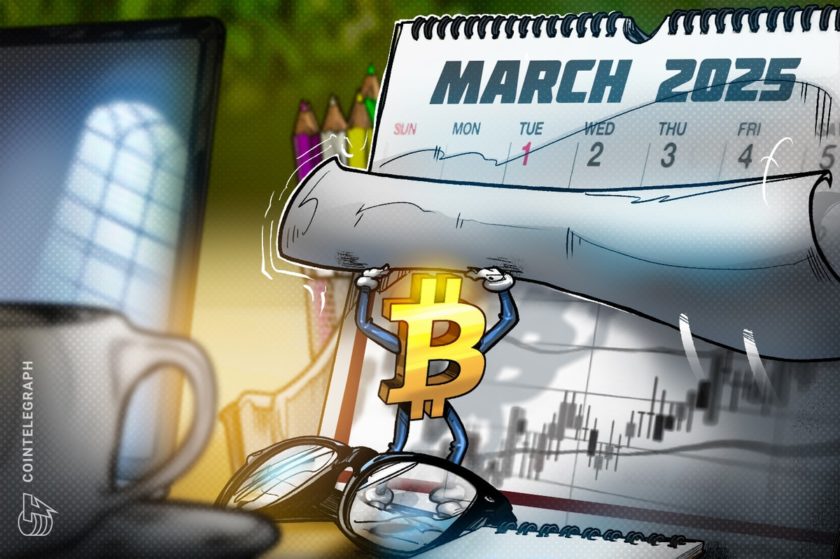When capital markets opened for the first time this year on Jan. 4, 2021, the focus of the front page of the Financial Times was squarely aimed at Bitcoin (BTC) with the headline: “Bitcoin tops $34,000 as record-breaking rally resumes.”
That Bitcoin is seeing institutional buy-in on a level unsurpassed in its history is certain, but what does this mean for the wider crypto space? How do we move from institutional adoption of Bitcoin or other crypto assets to connecting traditional finance markets with the decentralized finance and digital asset markets? If we can achieve this lofty goal, the inflows of capital, resources and attention would far surpass even the significant current DeFi space, thus leading to greater potential.
Few institutions are now in a position where they can invest in Bitcoin. The difficulty to reach such a stage should not be underestimated, and those funds investing in Bitcoin remain outliers. The largest institutional investors, such as pension and insurance funds, require highly sophisticated and liquid markets, lengthy historical track records, as well as needing to overcome significant internal risk and compliance concerns. These hurdles are multiplied when it comes to using crypto protocols. For example, a company looking to use digital tokens representing a firm’s shares on the Ethereum blockchain must adhere to existing financial and capital market regulations globally. This includes aspects, such as cross-border Know Your Customer and Anti-Money Laundering regulations.
To enable institutions to adopt DeFi, we must first let them access it in a compliant manner. This does not mean that all DeFi must be unduly regulated; this would defeat the purpose of a decentralized system. However, it is possible to introduce a protocol to facilitate the compliant use of DeFi. There are several aspects that make up such a system.
Digitization
While it is easy to create a digitized asset, the difficulty arises when compliance is introduced. One of the most pertinent issues centers around global securities regulation where there is a range of required actions to undertake before issuing a security, including consulting legal advice, documentation, due diligence, marketing and secondary trading, and corporate actions. These all incur further costs.
The unyielding inefficiencies throughout this process also create an opportunity for DeFi. A protocol able to solve these issues would significantly reduce a firm’s capital and resource expenditure while also improving the process for investors who would be able to access and trade in a similar manner to crypto assets today.
Due diligence checks
Due diligence checks including KYC and AML are a costly and mandatory process for institutions. An investor investing with multiple firms must complete the same checks with each of them — a time-consuming process for all parties. It also means that the investor is trusting multiple institutions with sensitive data.
DeFi offers the opportunity to redefine how KYC is completed. Instead of each firm doing its own KYC, an investor could conduct KYC protocols with an approved partner. This would enable the investor to retain control of their data, while institutions could share the burden of the KYC cost across each other. Institutions would, of course, be able to complete their own KYC if they did not approve of the KYC operator.
Data
Access to — and control of — data has become ever more contentious. The two prominent issues facing institutions regarding data are the security and privacy of users’ data, particularly post General Data Protection Regulation, as well as the ability to connect to DeFi through easy-to-use application programming interfaces.
User data can be protected using encryption methods such as zero-knowledge proofs, which enable users to share validated data with a third party without the data being revealed to said party. This would allow investors to prove they are eligible to complete a transaction without having to prove who they are or why they are eligible. This data can be encrypted and stored securely while always remaining in the hands of the user.
Institutions also require an easy way to share data. This can be achieved through APIs that will make it easy for institutions to connect to DeFi protocols while remaining compliant with regulations such as the European Union Payment Services Directive 2. This API needs to facilitate both on-chain and off-chain data.
Cross-border regulation
Requirements and processes vary from country to country, while fines for non-compliance have risen significantly since the financial crisis. The resource burden to meet this expanding compliance oversight has likewise increased. At the same time, investors expect to be able to invest globally rather than being constrained to their own jurisdiction. Blockchain technology, with its ability to digitize assets and transact instantly with peers globally, can provide a means to achieve this, but it requires firms to be able to maintain the same regulatory standards.
That is why a protocol is needed that can embed regulation at the layer level. Once a rule has been created or amended and subsequently accepted as smart contract logic, firms have no choice but to adhere to it. Furthermore, this can be tied in with the previously mentioned KYC checks to ensure an investor is able to invest in the product they want. This automizes cross-border transactions, significantly reducing costs for institutions.
DeFi investment terminal
Just like institutions leverage tools, such as Bloomberg Terminals, similarly, they require DeFi investment terminals to allow for access to real-time, actionable data. This would consolidate information across decentralized exchanges and blockchains, providing powerful and granular information.
Bridging TradFi and DeFi
There is often reluctance in the DeFi sector to countenance building a solution acceptable to TradFi. The fear is that it will corrupt the DeFi space. This is an unrealistic concern. DeFi, and blockchain more generally, offer myriad advantages to the financial system, which can be leveraged to make TradFi firms more efficient and compliant with ever more complex and increasing regulations.
By bringing TradFi to DeFi, we are in a more effective position to shape the future of finance. It would bring resources and attention on a different scale to what we currently have. We have seen the power that just a few teams can have in creating “Lego” blocks, on which the rest of DeFi has built. The task now is for us to build out the infrastructure through which TradFi can also develop.
The views, thoughts and opinions expressed here are the author’s alone and do not necessarily reflect or represent the views and opinions of Cointelegraph.
Rachid Ajaja is the founder and CEO of AllianceBlock, the globally compliant decentralized capital market. With a deep-rooted understanding of traditional financial institutions, Rachid spent six years as a quantitative risk analyst at Barclays Investment Bank, BNP Paribas and Moody’s Analytics. A serial entrepreneur with a passion for modeling, analytics development, quantitative analysis and data science, for the last decade, Rachid has been developing and implementing models and methodologies to help organizations with forecasting and risk management. He currently also serves as a venture partner at Alpha Omega Capital.
Related posts




